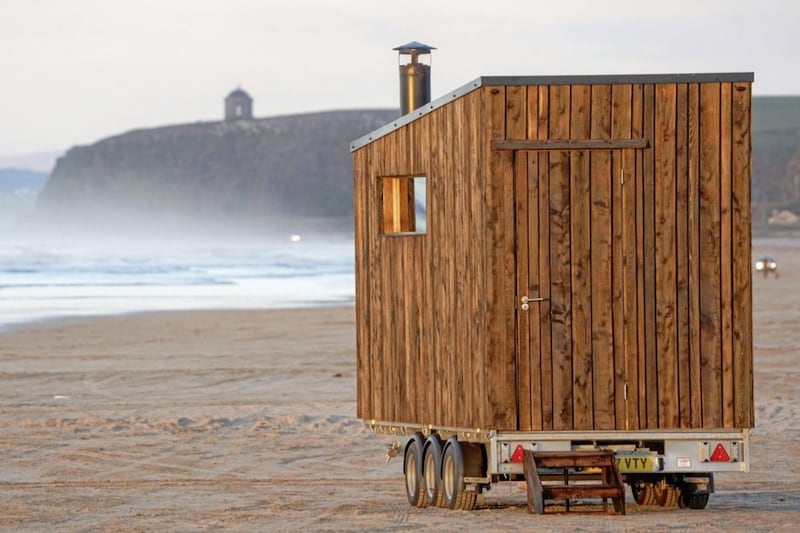The news that BBC Gardeners’ World presenter Monty Don will be creating a dog-friendly garden as his debut show garden for next year’s RHS Chelsea Flower Show will no doubt prompt fellow dog lovers to follow suit.
“This is something that I have no intention of repeating, it’s a one-off and we hope and believe that it will be truly spectacular,” says the BBC Gardeners’ World presenter of the RHS and Radio 2 Dog Garden.
“It’s not cluttered with messages, symbolisms or metaphors,” Don explains. “There will be doggy chairs, a lawn, a screen and maybe a path, long grass, plenty of shade, good trees and dog-associated plants.”
Radio 2 presenter Jo Whiley will be supporting the garden through her radio show and if Don needs any hands-on help, she’ll be there.
“I’m more than happy to be hands on. I’ve seen some of the elements of the planting already. If they want me to go and put it together then I’ll be putting it together.”
Whiley herself has Brodie, a Sproodle (springer poodle) and Django, a Golden Retriever, and says her own garden is really dog-friendly.
Don is anticipating that his golden retriever Ned, a regular on Gardeners’ World, will be part of the celebrations on press day at the show, and Whiley is hopeful that her two dogs will also be treated to a preview before the show is officially open to visitors.
Don is being joined in his mission by plant expert and horticulturist Jamie Butterworth, founder of Form Plants, who explains: “It’s an authentic garden. It wears its doggy heart on its doggy sleeve. It’s going to have armchairs for dogs to lounge in, a scruffy lawn for dogs to roll around in, a stream for dogs to wallow in.”
So, what can amateur gardeners do to keep their pooches happy?
Make sure there’s shelter
“Every garden is personal, but for me, maybe because I have two very lazy dogs, they love shelter, especially on hot days, big trees that create dappled shade,” says Butterworth.
Whiley adds: “We’ve got a big table outside where we entertain and the kids all sit and eat, and the dogs are just always under that table. So shade is very important. Trees are too. We have some lovely trees and a treehouse they always hide under.”
Give them somewhere to relax

“My dogs use my garden as somewhere to stretch and lay. Some dogs will dig. Some dogs will use it for other things,” says Butterworth.
Include a lawn if you have space
“We’ve got a big lawn and a stream at the bottom of the garden and they are constantly in that stream, coming back and forth,” says Whiley. “We are very lucky because we live in the countryside, but a lawn is essential.

“Dogs love the lawn, they love playing and they rough around together all the time and that is probably the most important thing, just a space for them to play and tumble.”
Think about water
Butterworth, who has a tiny garden in Windsor, says it’s essential that his dogs have water they can drink from and wallow in.
Create a digging pit
Digging is a natural behaviour for dogs, so you may want to choose an area of your garden where you are happy for your dog to dig in, the dog welfare charity Dogs Trust advises.
You could find a sturdy deep container, dig a hole deep enough to house it, so that the top is in line with the surface of the soil, fill it with the earth you’ve dug up and scatter or bury dog treats in it for your dog to find. If the dog digs elsewhere in the garden, go to the digging pit and hide the dog’s rewards in it to encourage the dog to use it.
Plant sensory specimens
Whiley says that the nepeta (catmint) she has planted attracts her dogs as well as cats. “They are constantly just going around sniffing, particularly the Sproodle. He just sniffs constantly. Our nepeta appeals to the dogs.”
Explore parks and wider open spaces
If you don’t have space in your garden for a lot of activity, go further afield to parks and more open spaces where dogs can explore, Butterworth suggests. “Part of this garden’s message is that it’s there to celebrate dogs but it’s the start of the journey onwards into the countryside.”
Choose plants carefully
Avoid plants which are toxic to dogs and other pets, including delphiniums, foxgloves and yew, and don’t leave bulbs out such as daffodils and tulips which you haven’t yet planted for spring, because many are toxic to dogs.
Keep your garden space secure

Make sure boundary fences, walls and hedges are secure so that your dog can’t make an unexpected exit.
After the flower show, the garden will be transferred to Battersea Dogs and Cats Home.








